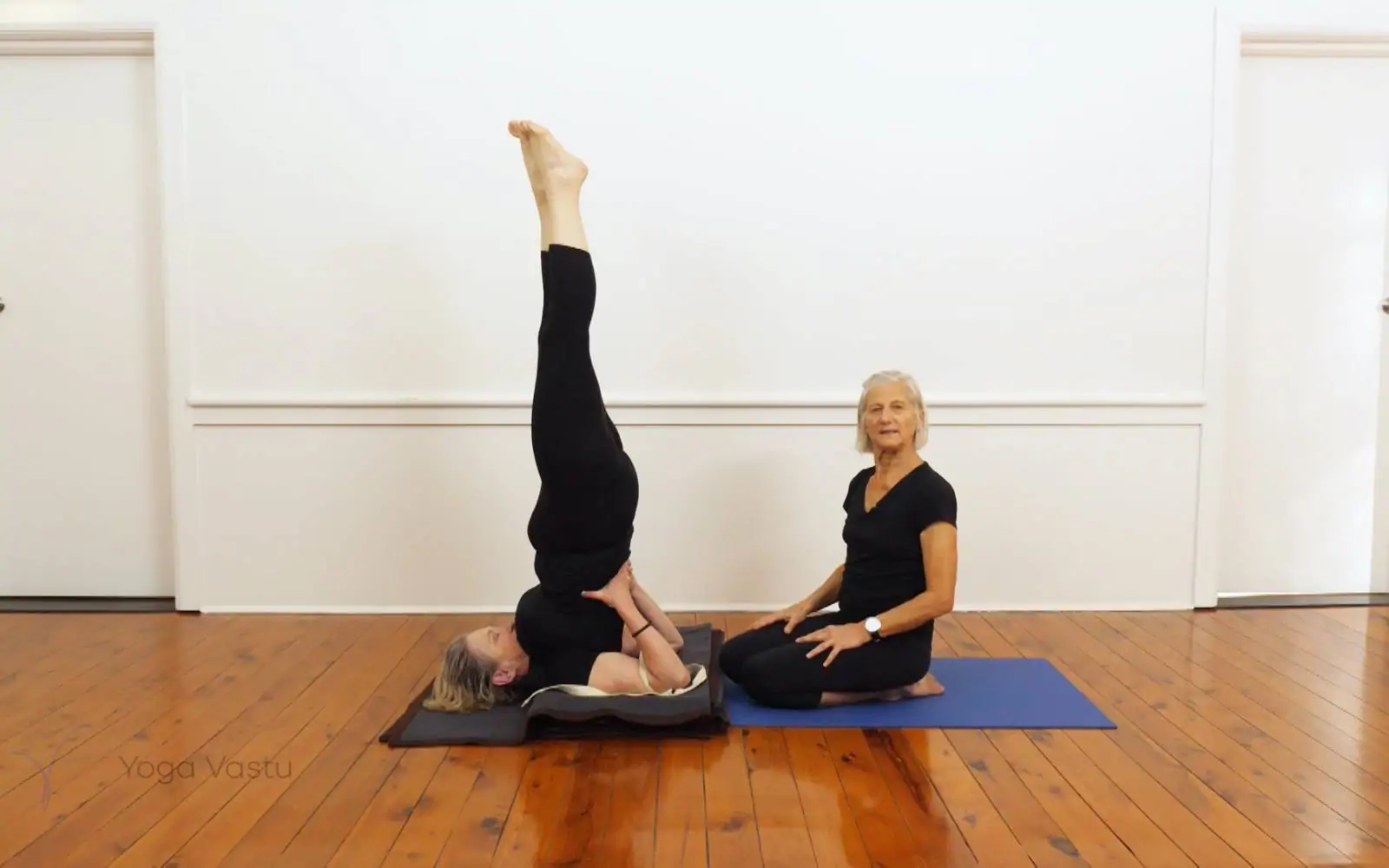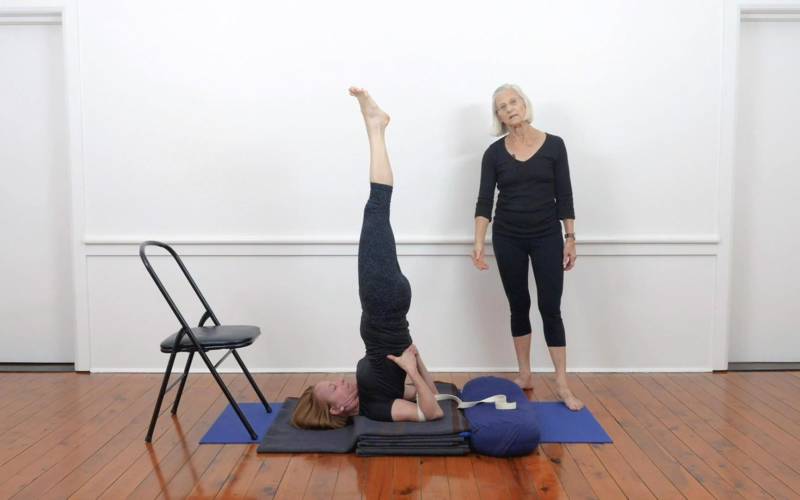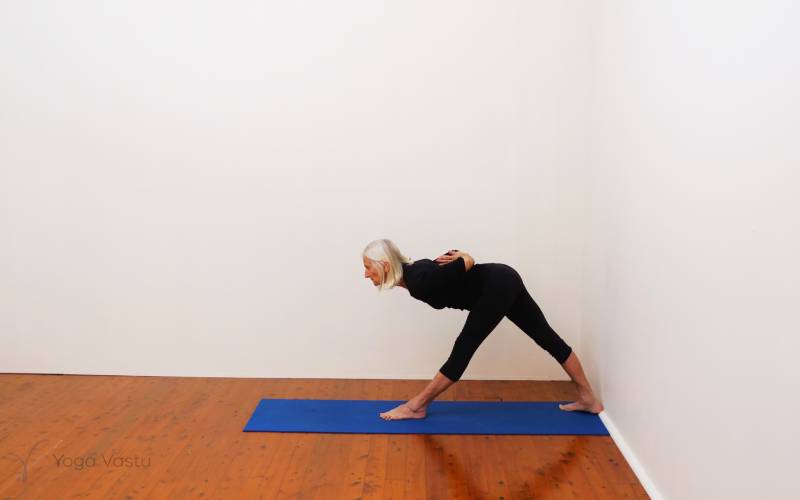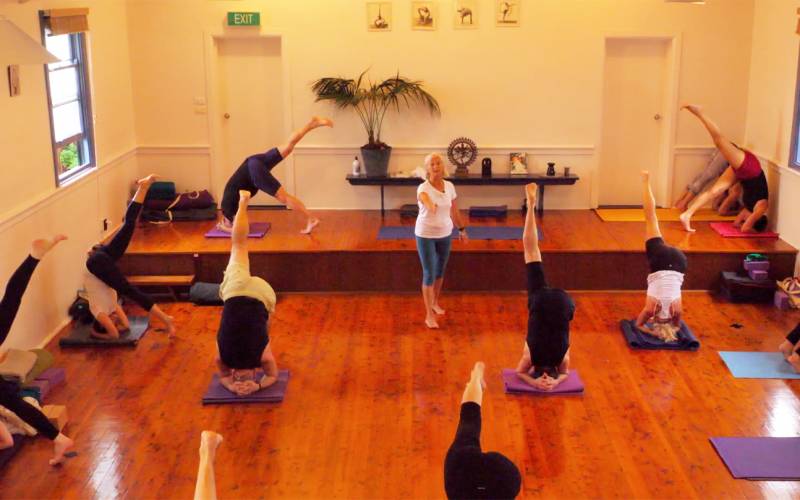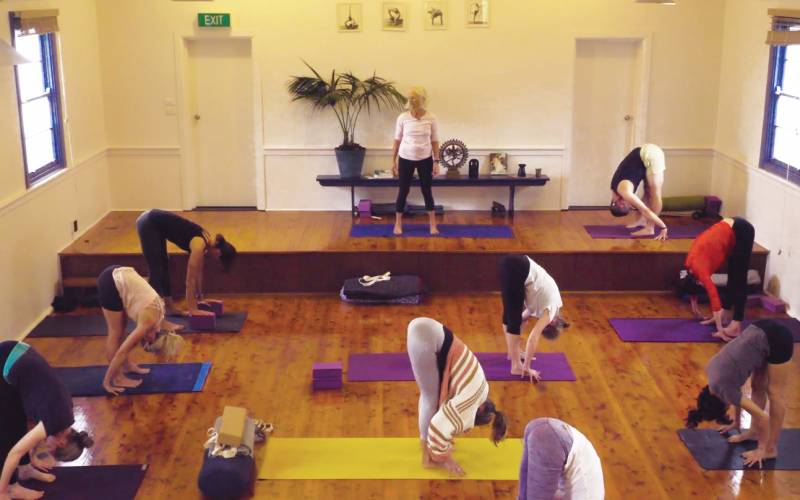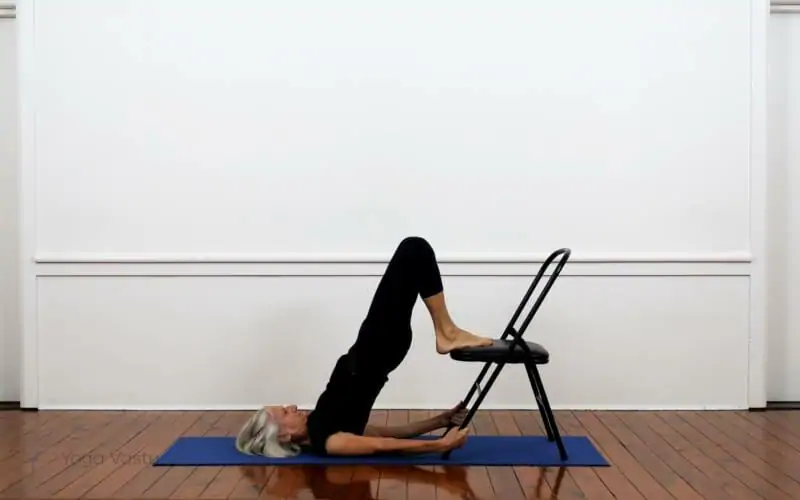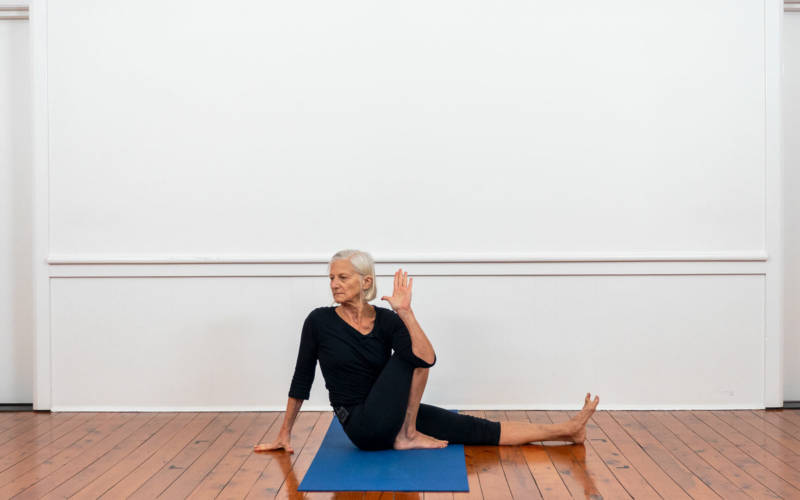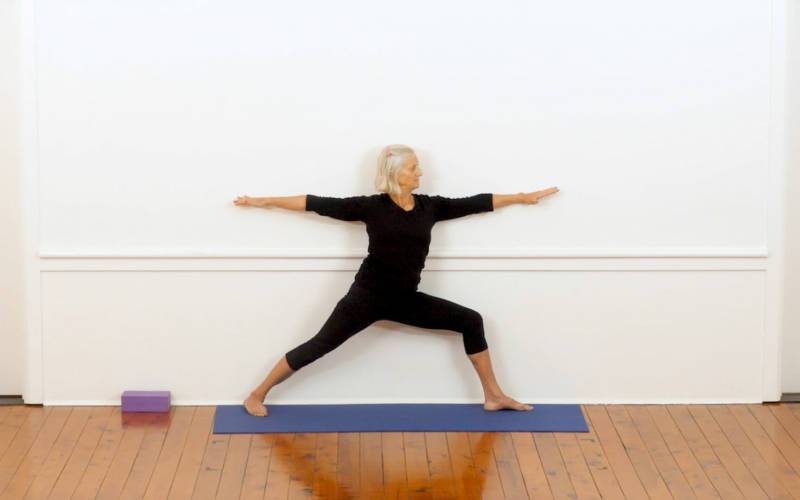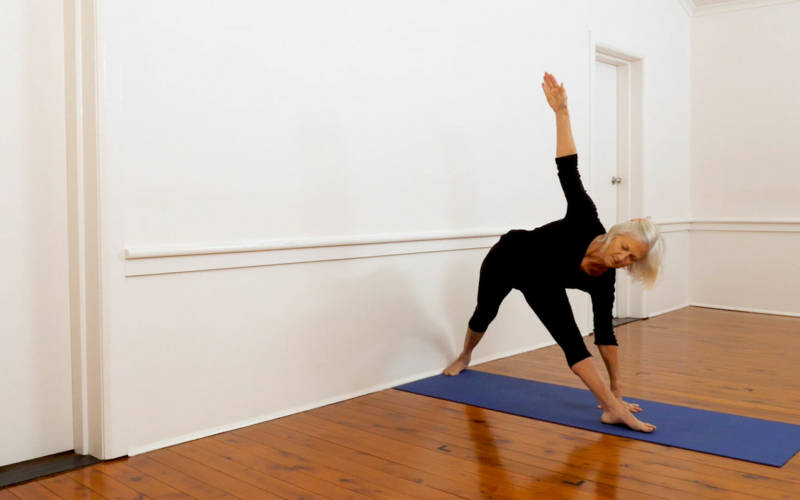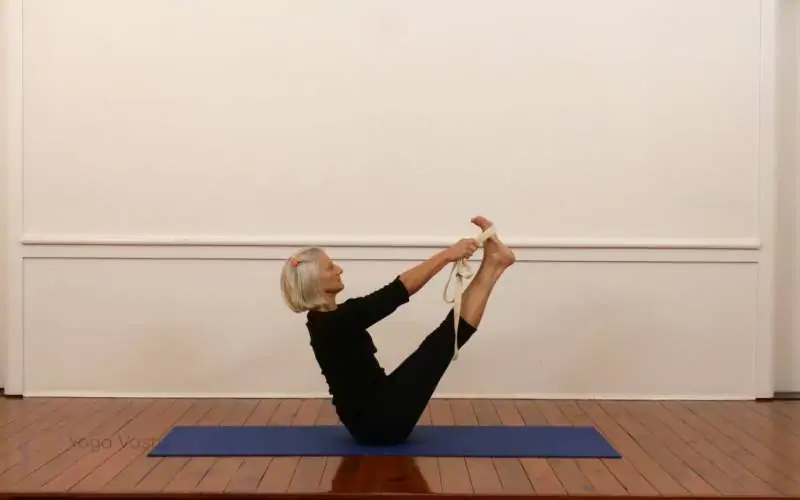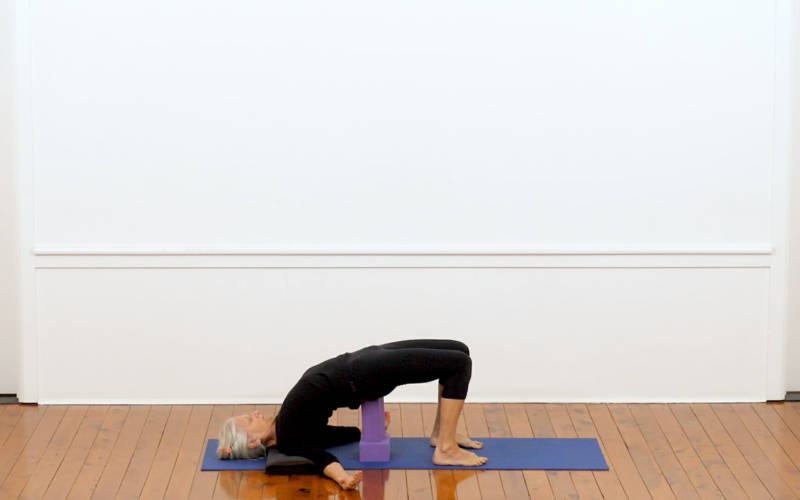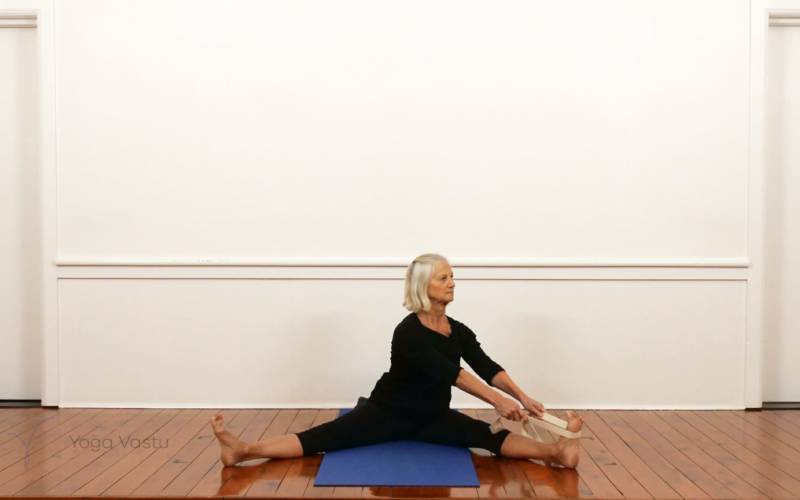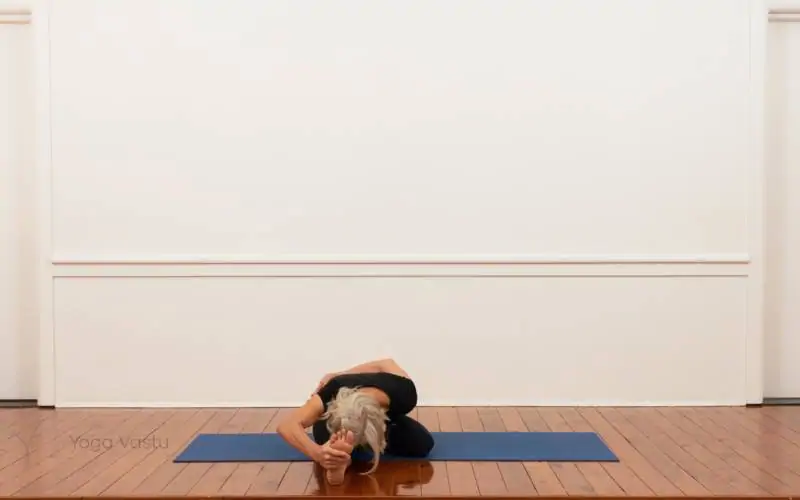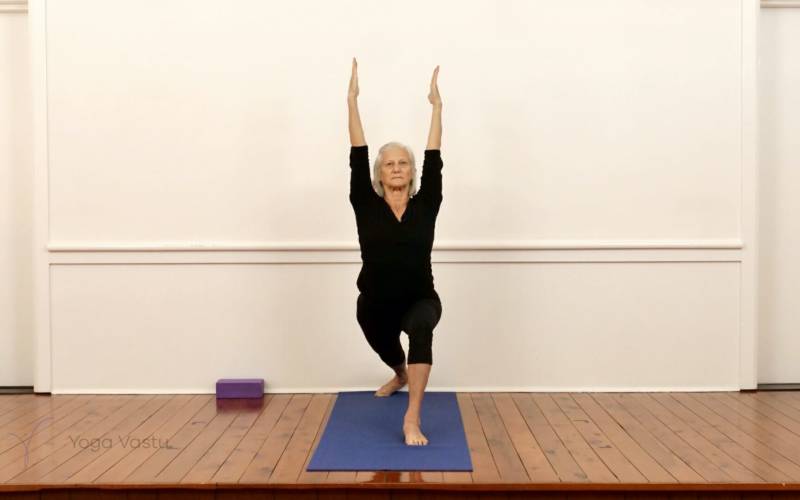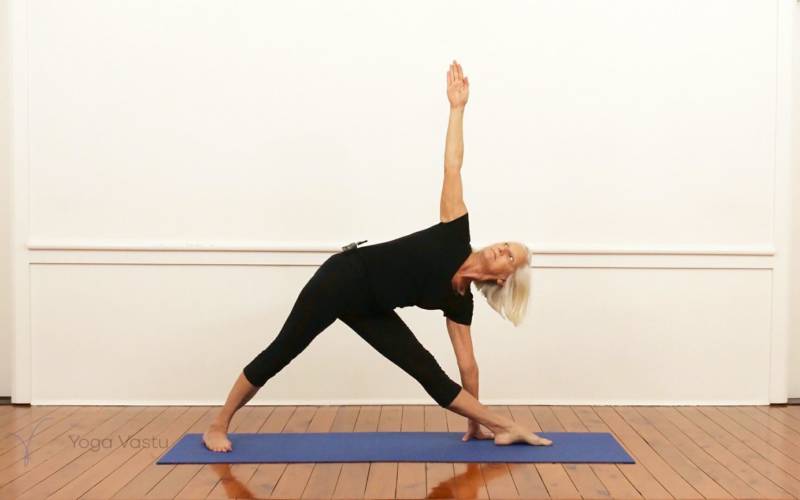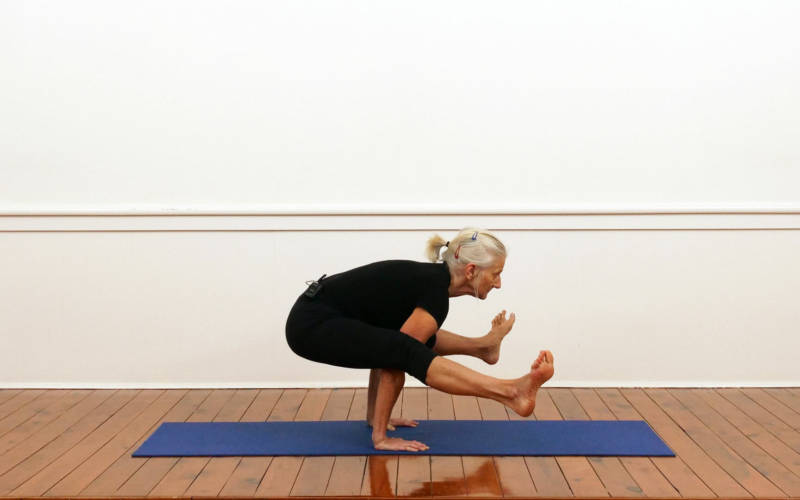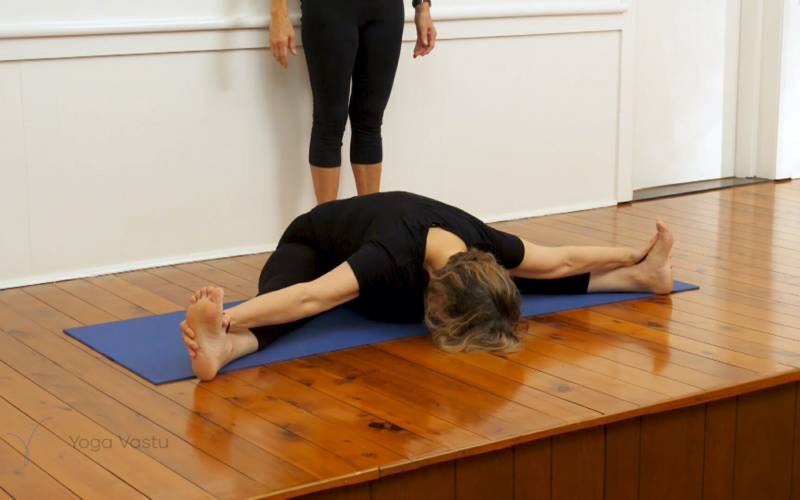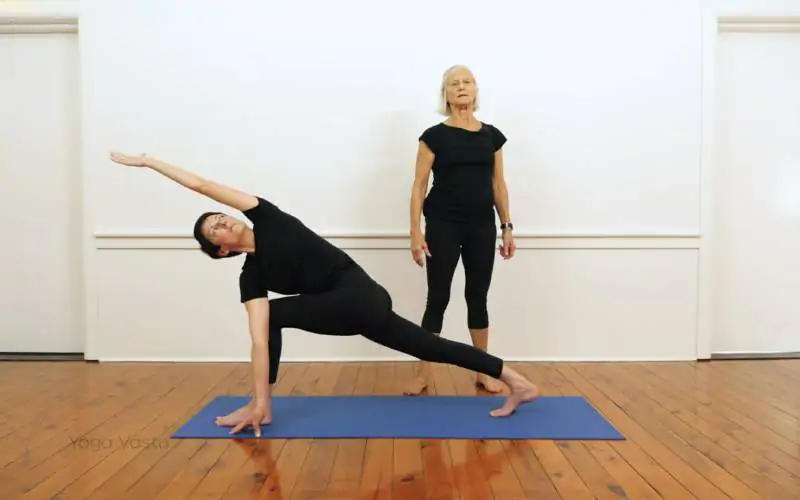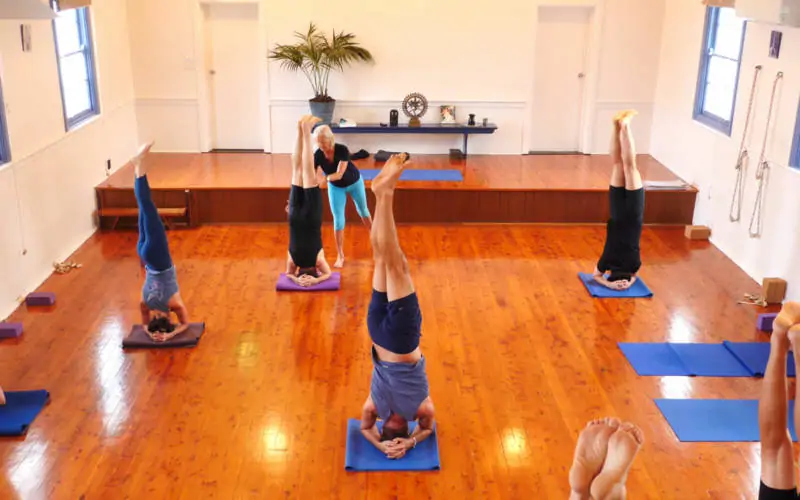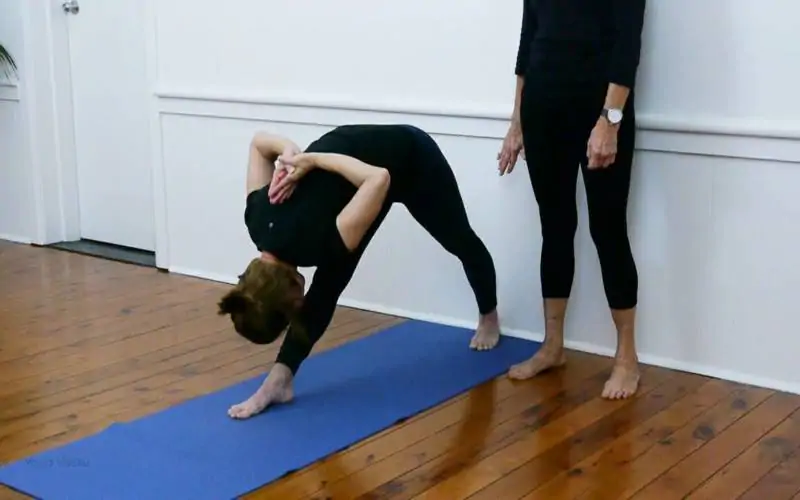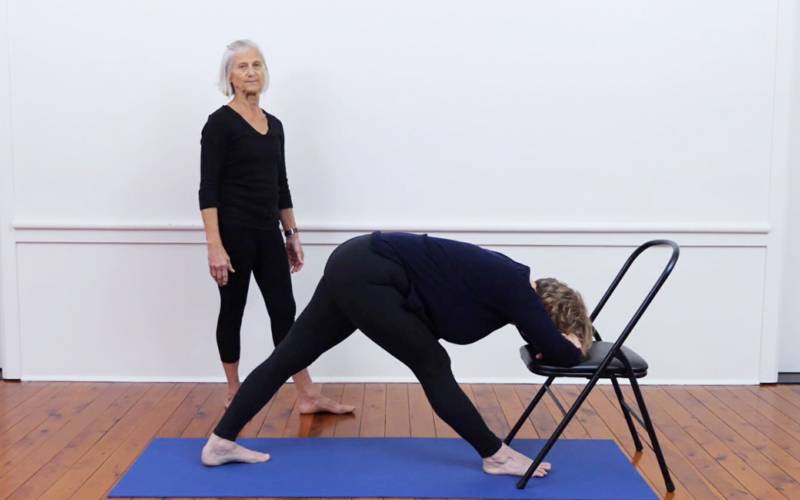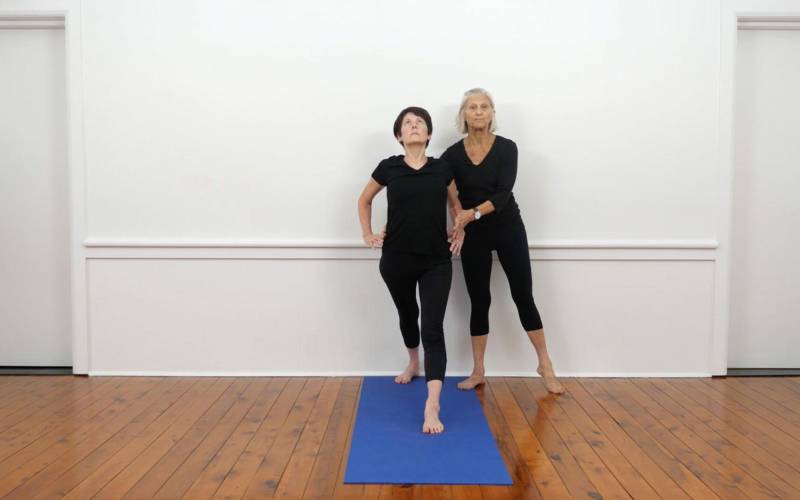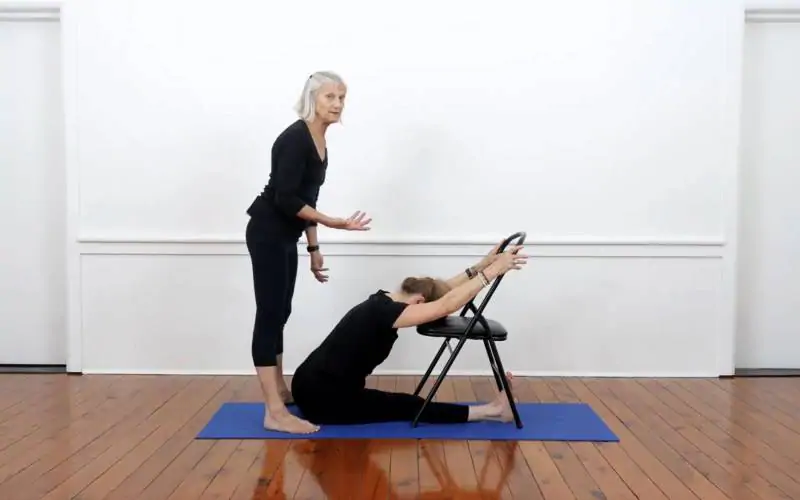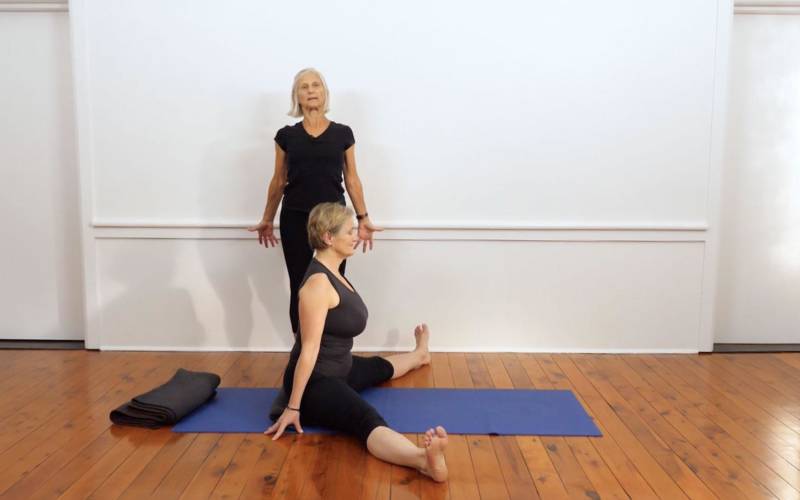How to perform Shoulderstand
Activate your arms and shoulders as you lift your body up perpendicular to the floor. Use blankets or bolsters to support your shoulders. Make sure the back of your neck stays relaxed and maintains its natural curve.
What is Salamba Sarvangasana (Shoulder Stand)?
Salamba Sarvangasana, or Sarvangasana for short, is known as the Mother of asana. It is considered one of the most important of all poses. While initially some effort is required to maintain the lift, with practice it becomes a quieting and cooling pose. It is generally done towards the end of a sequence as the mind and body wind down. It may be done earlier, provided it is followed by other quietening poses such as the supported forward bends.
It is the counter pose to Sirsasana, and, as a minimum, it should be done for as long as Sirsasana. It may, however, be done on its own or held for a longer time. It is typically introduced to beginners well before Sirsasana is taught.
When to use Salamba Sarvangasana (Shoulder Stand)?
The position of the head and chin, have a direct positive impact on the Thyroid and parathyroid glands. The inversion allows venous blood to flow back to the heart with less effort by the heart, thus restoring and resting the heart. Other benefits include improved sinus and nasal functioning.
The soothing effect of the pose assists in calming the nervous system, reducing stress and tension, and can assist in improved sleep. The inverted position has an impact on the abdominal organs and can assist in relieving constipation, improve the functioning of the abdominal organs, and assist to counter urinary disorders. Sarvangasana is said to bring back lost vitality.
If you are suffering from dizziness or high or low blood pressure, avoid going straight into pronounced inversions from the Sirsasana and Sarvangasana families. Work your way up to them through such forward bending poses as Uttanasana and Paschimottasana, or Adho Mukha Svanasana. Forward bending poses are also useful for counterbalancing the inversion. Another good pose to assume when you come out of inversions such as Salamba Sarvangasana is Virasana, as it allows you to return to neutral and get grounded.
